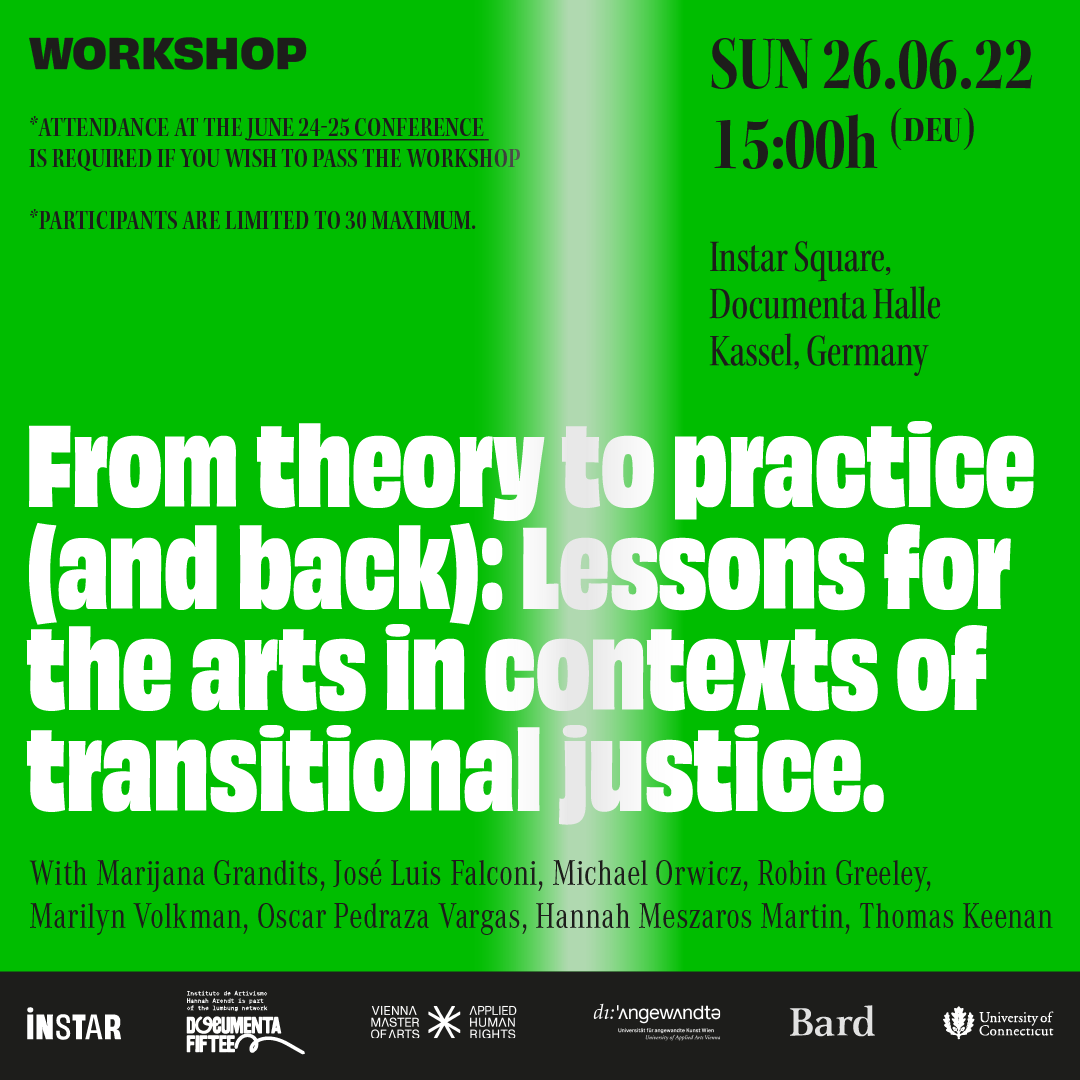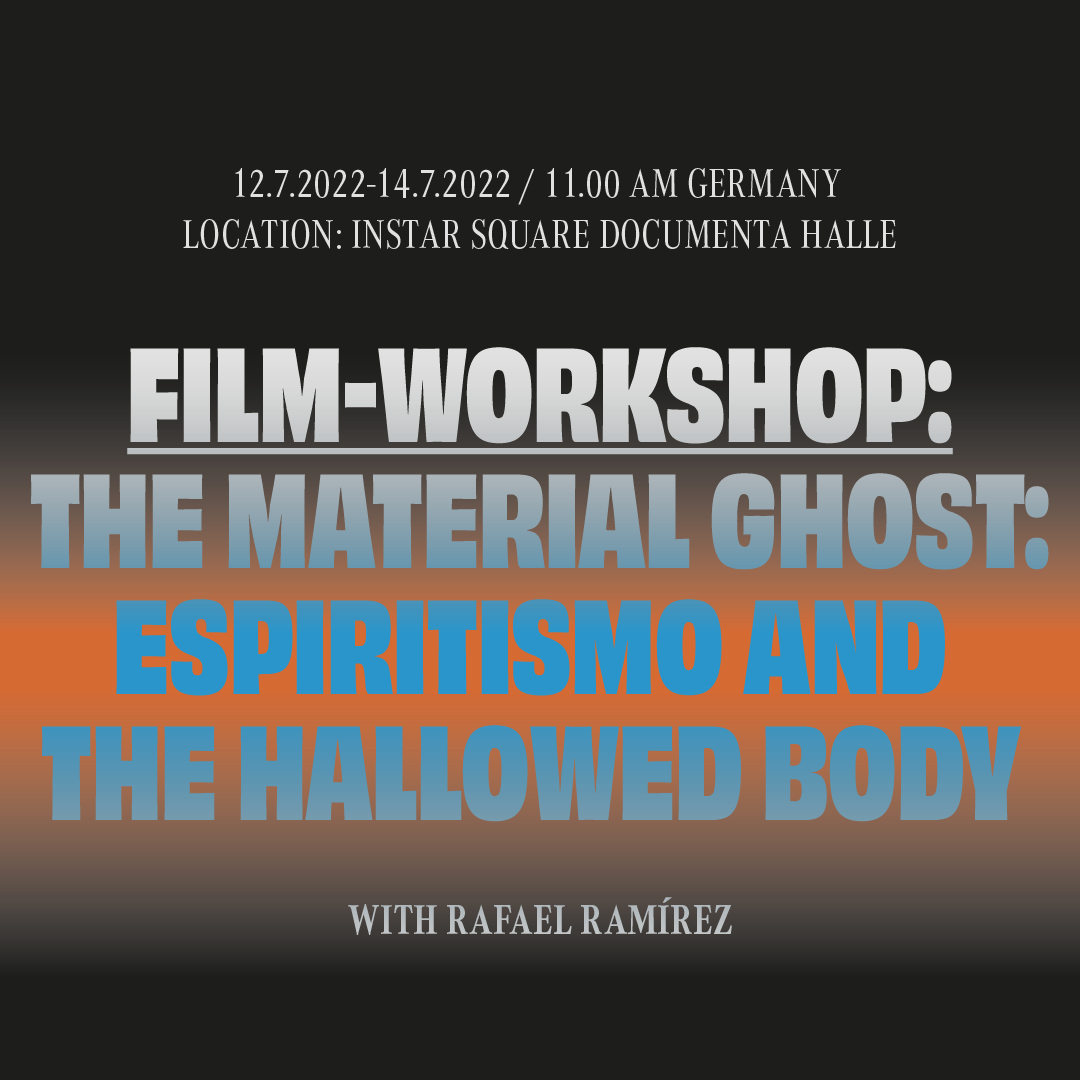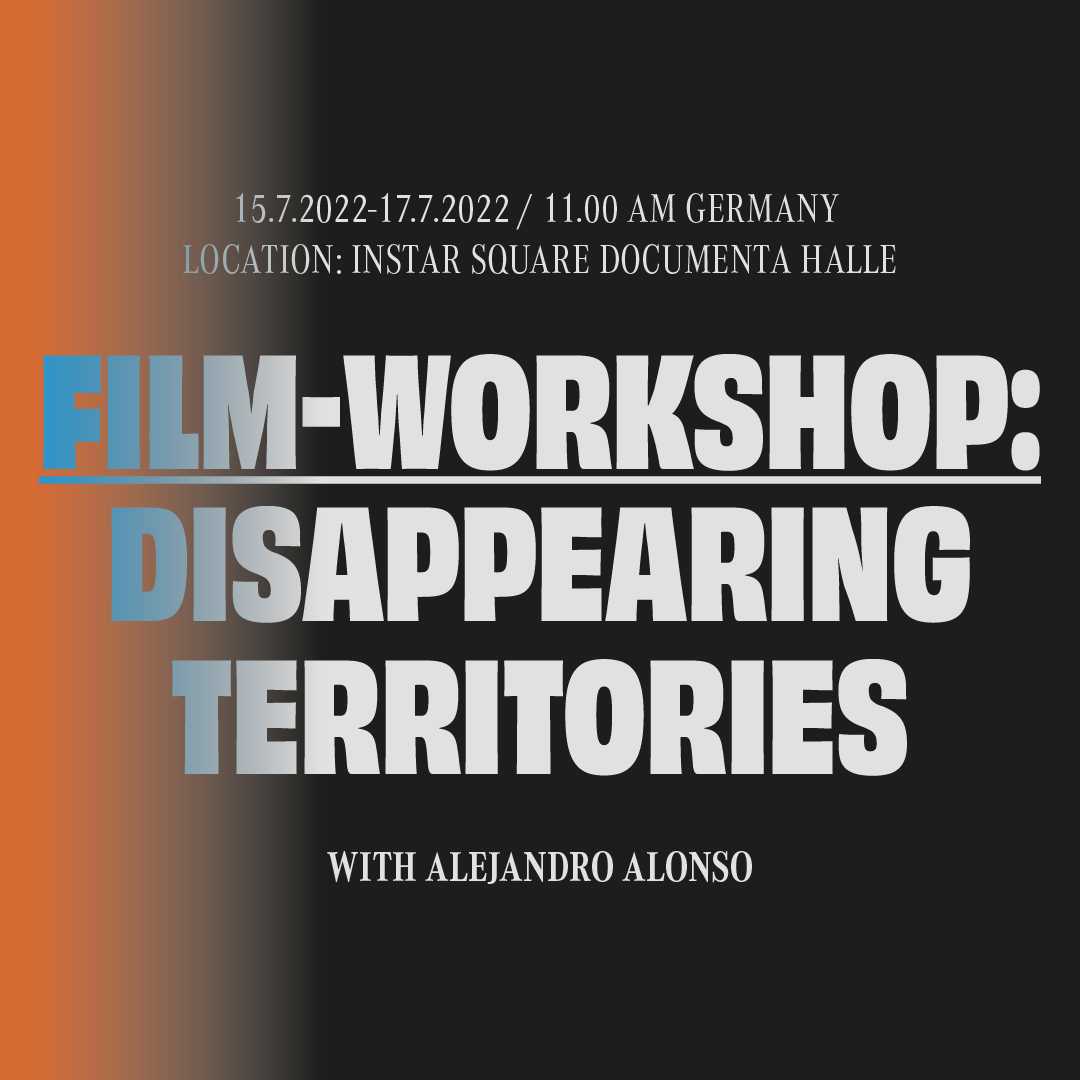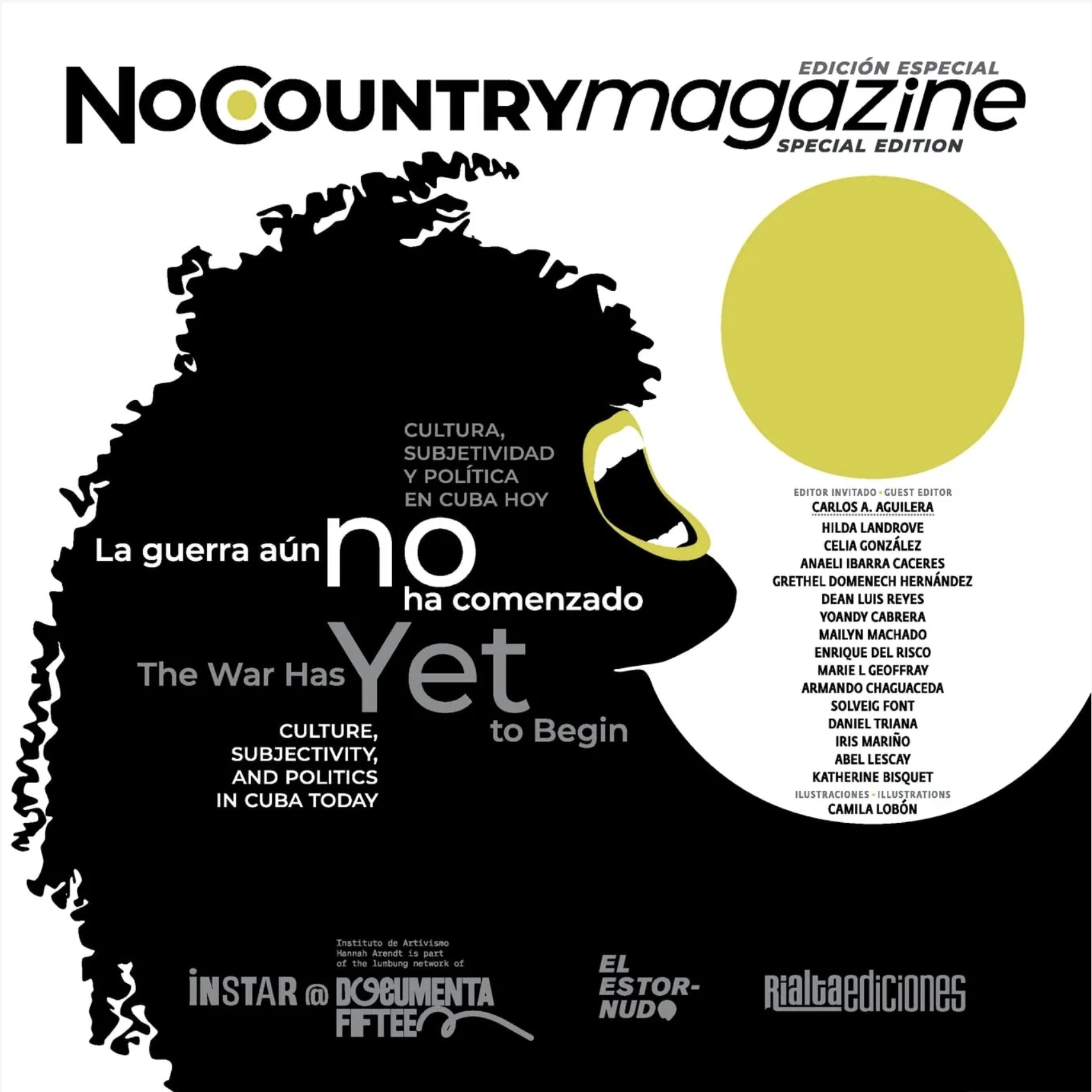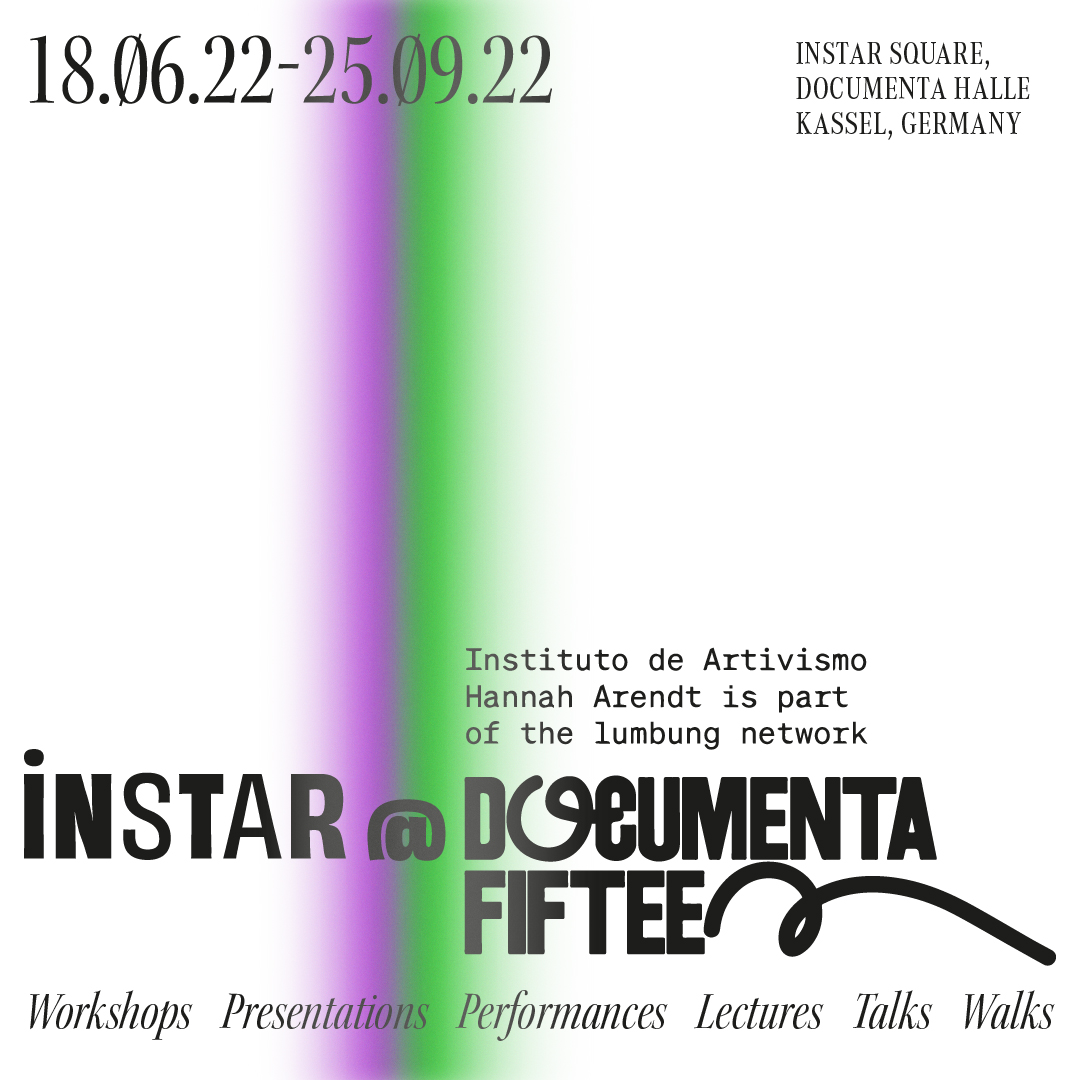
What is INSTAR? What does the institute do?
The Hannah Arendt Institute of Artivism (INSTAR) was founded in 2015 with the goal of using art for the promotion of civic literacy and social justice in Cuba. It functions as a protective umbrella for other civic and art collectives, and works on the restitution of historical memory through public programs and an oral history archive.
Operational Factography, INSTAR’s project for documenta fifteen, takes cultural legitimacy as its theme. documenta is a quinquennial exhibition that confers international prestige and legitimacy upon all who exhibit here. Yet, the artists shown in this project have all been censored, stigmatized and criminalized by the Cuban regime.
Through four components—an archive, ten short exhibitions, a public program, and a poster project—visitors in Kassel will experience a counter-narrative to Cuba’s official artistic and cultural history. International recognition is thereby brought into direct conflict with national legitimacy.
When was INSTAR formed?
The Hannah Arendt Institute of Artivism (INSTAR) was born on May 20, 2015, with an open call by artist Tania Bruguera for a collective action: the durational reading of Hannah Arendt’s The Origins of Totalitarianism (1951) in Bruguera’s apartment in central Havana while under house arrest. Arendt’s classic study reveals the ways in which totalitarian regimes operate and has ongoing relevance for the understanding of Cuban politics.
INSTAR’s first action, this durational reading, was the culmination of the campaign #YoTambiénExijo [“I also demand”], created by Bruguera and a group of Cuban citizens in December 2014. Its goal was to demand transparency from the Cuban regime about the détente between Cuba and the United States that Castro and Obama had announced that month. Within a few days, the hashtag #YoTambiénExijo united more than 20,000 people on social media, activating a civic space that brought together Cubans inside and outside the island, who debated the future of the country as well as the role played by art and artists in society.
How does INSTAR operate?
INSTAR operates on the margins between artistic practice and activism. Its headquarters, a building in central Havana, is used as a base for the promotion of civic literacy and social justice in Cuba. Its structure works through collective organization and consensus, creating a small-scale model for the future of the island. Its values are institutional transparency, freedom of expression, the observance of human rights, zero tolerance of discrimination, and the fulfillment of labor rights (including fair working hours and wages, and livable working environments for single-parent families). INSTAR also awards Prizes and Scholarships for the financial support of independent art and activist practice in Cuba.
INSTAR is the acronym of the Institute, but it is also a verb that in Spanish means to instigate, to call on, to exhort, to incite and to encourage.
What is INSTAR’s project for documenta fifteen?
INSTAR’s project for documenta fifteen, Operational Factography, uses four simultaneous exhibition formats:
An archive, situated on cabinet 2, which grows each day thanks to collective input and collaboration. This type of expanding archive not only reflects our interest in the performativity of data; it also reflects our goal to address a history that has been mutilated and whose recuperation can only be achieved through collective memory, which is also always incomplete.
The deliberate and tactical use of the white cube as an alienated space. The historical connotations of the “white cube” gallery as a modernist display space help to confer value and visibility on practices that have been distorted and/or erased by the Cuban regime.
INSTAR Square as a counterpublic sphere, an area of passage and chance encounters. Public space in Cuba is controlled by the regime, which in the last few years has created a series of decree-laws (349, 370, 35) determining what can and cannot be done in public. INSTAR Square hosts a public program of debates, workshops, conferences and meetings. The backdrop to the Square is a facsimile of a historical mural from the 1980s by Carlos Cárdenas and a newly commissioned mural by Hamlet Lavastida that shows the floor plan of the State Secret Police Headquarters.
A series of posters announcing each iteration of the project, and which functions as a dispersed exhibition around Kassel. The images used are works of art censored by the regime from the 1960s to today.
Our hope is that Operational Factography, despite focusing on the Cuban context, might also supply tools to understand the dynamics and contradictions of authoritarian regimes around the world.
What is Operational Factography?
The title of INSTAR's project for documenta fifteen, Operational Factography, is indebted to the practice of Soviet poet, journalist, and constructivist playwright Sergei Tretyakov (1892–1937). Tretyakov believed that artists should not only reflect reality but also shape its economic and working conditions. For two years, Tretyakov lived in a kolkhoz (collective farm) in the North Caucasus and engaged in administrative tasks like editing a newspaper and working with farmers on inventorying, literacy, and accounting. He also devised an informational tool that he called “operational factography”: a wall newspaper that helped the community coordinate and visualize its many activities.
What are INSTAR’s goals at documenta fifteen?
INSTAR is using Tretyakov’s idea of Operational Factography to achieve two goals.
The first is to give visibility to independent artistic and cultural practices that have been excluded, censored, stigmatized, and criminalized by the Cuban regime. In turn, this gesture allows us to question the logic of cultural legitimation, and its use as a political instrument, more generally. In Cuba, cultural legitimation is a mechanism to reward the obedience and complicity of intellectuals with those in power. As a consequence, independent and autonomous cultural producers, who show a different point of view from that enforced by the regime, are devalued, defunded, and eventually obliterated from the country’s cultural history.
The second is to show that cultural life in Cuba can never be something other than a partial and incomplete image, both for an international audience and local viewers. Visitors to Kassel will not be able to see the whole project—because the archive is continually growing, the exhibition is split into ten iterations, the public program is never repeated, and the posters are ephemeral and contingent.
Credits
INSTAR is Anaeli Ibarra, Aminta D’Cardenas, Camila Lobon, Chris, Claudia Patricia Olivera, Gretell Domenech, Juliana Rabelo, Leila Montero, Leonardo Otaño, Marta Maria Ramirez, Solveig Font, Tania Bruguera, and Ulises Padrón.
Murals by Carlos Cárdenas and Hamlet Lavastida.
The INSTAR team would like to thank:
The input of artists, intellectuals, and colleagues who have collaborated on the content of the archive.
Other projects in Cuba that have accompanied INSTAR during the last few years of activism: Espacio Aglutinador, Peña del Júcaro Martiano, Cubalex, El Toque, Inventario, Justicia 11J, and independent media such as El Toque, Rialta, El Estornudo, No Country Magazine, Hypermedia Magazine, La Maleza, La Revista de la Vagancia, Diario de Cuba, Cubanet, Cibercuba.
The organizers of each iteration to be shown in Kassel: Sandra Ceballos, Jose Luis Aparicio Ferrera, Joaquín Badajoz, Natalia Zuluaga y Gean Moreno, Amaury Pacheco, Samuel Riera, Derbis Campos-Hernandez, Michel Matos, and Nara Mansur.
The main organizers of this project: Clara Astiasaran, Tania Bruguera, and Ernesto Oroza.
Freedom for Cuban Political Prisoners!
INSTAR

